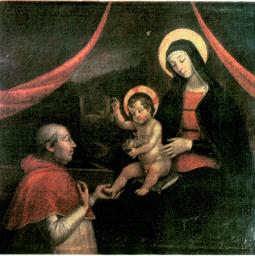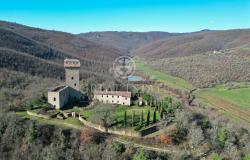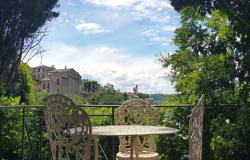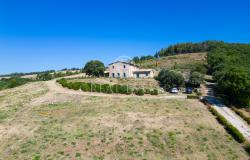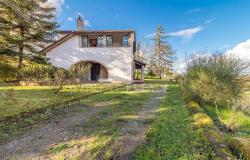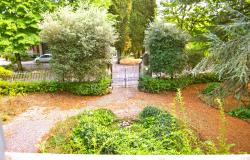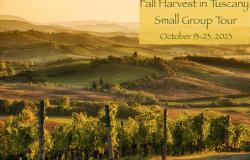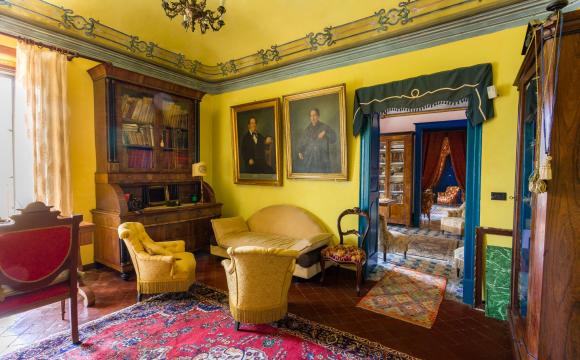The Umbrian town of Perugia is celebrating the anniversary of the birth of Renaissance artist Pinturicchio with a series of events dedicated to the local boy who overcame his misfortunes to make it big.
Despite being described as ''small, deaf and not much of a looker'' by a contemporary writer, Pinturicchio found fame both in Umbria and in Rome, leaving his mark in the Sistine Chapel and becoming a favourite of dissolute Borgia pope Alexander VI.
The hub of this year's 550th birthday celebrations is the National Gallery of Umbria in Perugia, where nearly all Pinturicchio's surviving moveable works have been brought together for the first time.
The Honolulu Academy of Art, the National Gallery in London and the Brooklyn Museum in New York are among museums across the world that have loaned over 100 paintings and drawings for the show, described by curator Vittoria Garibaldi as ''a gem of an exhibition''.
Among the highlights is a fresco fragment showing a fleshy baby Jesus, the only surviving piece of a large mural Pinturiccio painted while decorating the Borgia Apartments in the Vatican for Pope Alexander in the early 1490s.
The fresco originally showed the pope kneeling at the feet of a Madonna with the face of his mistress Giulia Farnese, and it is thought to have been stripped from the walls by defenders of the Church's integrity in the 17th century.
A copy by the artist Pietro Facchetti has saved the scene for posterity.
Also on show is a series of small panels that Pinturicchio painted during the 1490s depicting the Madonna and Child, remarkable for their inventive execution and the unusual variation in the faces of the two holy figures.
''It's the first time even art historians such as myself have had an opportunity to admire these wonderful panels close up,'' said art historian Francesco Federico Mancini, who contributed to the exhibition catalogue.
''We were afraid that putting a dozen paintings of this sort together might be dull, but each is quite unique,'' he added.
Among the panels is Pinturicchio's undisputed masterpiece, a large polyptych commissioned in 1495 for the altar of the church of Santa Maria dei Fossi in Perugia.
The birthday celebrations continue across town at Palazzo Baldeschi al Corso with a public showing of a ''lost'' Madonna and Child that recently returned to Italy after more than 100 years abroad.
Sold to an Austrian buyer in Rome at the end of the 19th century, the work subsequently disappeared before turning up at an auction house in Vienna in April last year.
A Perugia-based private collector stumped up 460,000 euros for it.
Elsewhere in Umbria, a new illumination system has been installed in the Baglioni Chapel, or Capella Bella, in the Church of Santa Maria Maggiore at Spello which houses a cycle of frescoes considered to be among Pinturicchio's greatest works.
Organisers have also devised itineraries for the public to visit other cities in the region housing masterpieces by Pinturicchio including Orvieto and Spoleto, where he decorated the cathedrals.
Born Bernardino di Betto to a wool dyer who died of plague while his son was still a teenager, Pinturicchio began his career in a city already whipped into artistic fervour by visits from Renaissance masters such as Fra Angelico, Piero della Francesca and Filippo Lippi.
He rubbed shoulders with fellow Umbrian painter Pietro Perugino and his pupil, the young Raphael, in his native city before moving to Rome, where he worked on the chapel of Cardinal Domenico della Rovere in the Church of Santa Maria del Popolo and later collaborated with Perugino on frescoes in the Sistine Chapel.
After a period of painting religious panels, he returned to mural work for patrons in Rome and in Siena, where he died in 1513.
'Pinturicchio' is at the National Gallery of Umbria in Perugia until June 29.
